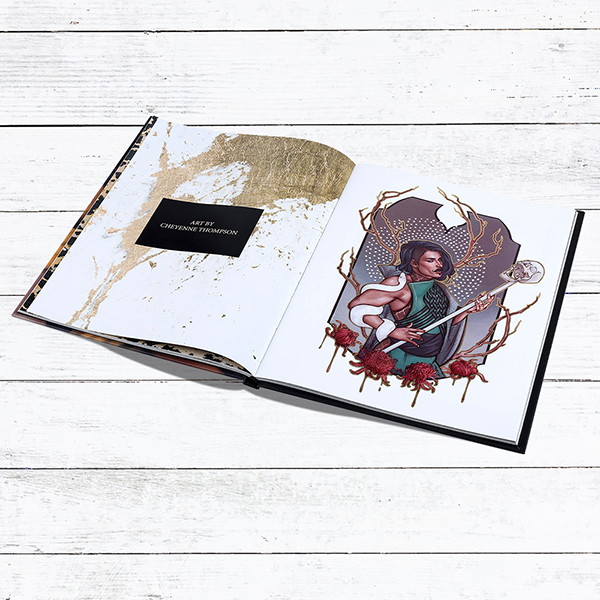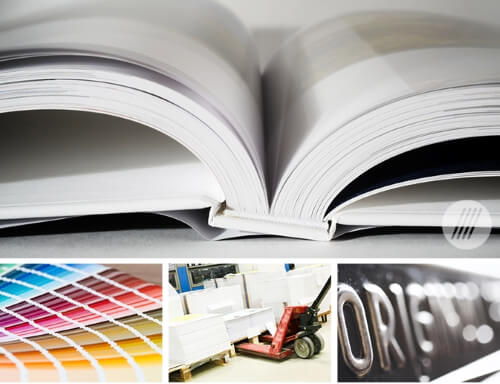Optimizing Files for CMYK Conversion in Your art book Prints
Optimizing Files for CMYK Conversion in Your art book Prints
Blog Article
Discover the Vital Overview to Art Book Printing for Aspiring Artists and Publishers
As an ambitious musician or publisher, comprehending the nuances of art book printing is vital to bringing your vision to life. What are the crucial aspects you should concentrate on to produce a stunning art book that absolutely represents your work?
Comprehending Different Types of Art Books
When you plunge into the world of art publications, you'll swiftly uncover that they are available in different kinds, each tailored to different artistic expressions and audiences. Coffee table publications typically display sensational visuals, excellent for casual browsing, while monographs dive deep into a private artist's job, providing context and understandings. If you have an interest in details art movements, exhibit catalogs provide thorough paperwork of programs, featuring essays and reviews.
For educational purposes, art guidebooks and method books guide you via various tools and designs, making them crucial for striving musicians. Each style serves its objective, and understanding their distinctions can boost your art book journey.
Picking the Right Paper and Products
Picking the right paper and materials can considerably impact the overall top quality and feel of your art book. Beginning by thinking about the sort of art work you have. For vivid colors and elaborate information, select a shiny surface or a heavyweight matte paper that improves visual depth. If your job includes softer tones or appearances, an all-natural or uncoated paper can offer a warm, inviting touch.
Think of the weight of the paper, too. Thicker choices typically lend a more professional appearance, while lighter documents can minimize printing costs. Don't ignore the binding materials; a tough cover can safeguard your web pages and include to the book's visual.
Finally, think about sustainability. Environment-friendly options are acquiring popularity and can mirror your worths as an artist. By meticulously picking your paper and materials, you'll ensure that your art book not just looks great yet also really feels unique in the hands of your visitors.

Choosing the Best Printing Techniques
When it involves printing your art book, picking in between countered and electronic printing can substantially affect your end product. You'll additionally want to consider just how paper quality impacts the total look and feel of your art work. Allow's discover these essential printing methods to discover the very best suitable for your task.
Balanced Out vs. Digital Printing
While both balanced out and digital printing have their advantages, picking the best technique for your art book can significantly influence the final product. Offset printing offers high-grade images and dynamic colors, making it optimal for bigger print runs. Inevitably, your selection should line up with your imaginative vision and distribution strategy, making sure that your art book mirrors the high quality you prefer.
Paper Top Quality Factors To Consider
Selecting the appropriate paper top quality can significantly enhance the visual appeal and responsive experience of your art book. Start by taking into consideration the weight and structure of the paper. Heavier paper usually really feels even more lavish and can much better display lively shades and elaborate information. For prints, a shiny surface can make pictures pop, while a matte finish offers a softer, a lot more subtle appearance. Do not fail to remember regarding the paper's illumination; brighter sheets can boost color accuracy and contrast.
Following, believe concerning the sustainability of your option. Environment-friendly choices are becoming significantly preferred and can interest environmentally-conscious viewers. Lastly, request examples to see just how different documents collaborate with your artwork, guaranteeing the last product reflects your vision perfectly.
Making Certain Color Accuracy in Your Prints
To accomplish spectacular prints, you require to concentrate on color precision from the beginning. You'll desire to use color calibration strategies to confirm your monitor and printer remain in sync. Additionally, proofing your job before the last print run can assist catch any discrepancies, guaranteeing your art looks equally as you envisioned.
Shade Calibration Strategies
Ensuring color accuracy in your prints begins with effective shade calibration techniques that assist preserve consistency in between your digital images and final printed products. First, adjust your redirected here display making use of hardware calibration tools to attain the very best shade representation. This validates that what you see on-screen matches what gets published. Next, choose a shade profile suited for your printing procedure, like CMYK for print products. Consistently examine your printer's setups and keep it to stay clear of shade shifts. It's also necessary to make use of high-grade paper that matches your inks, as different surface areas can greatly affect color result. By constantly using these strategies, you'll boost the overall top quality of your art prints and far better share your creative vision.
Proofing for Precision
While you may assume your electronic pictures await print, proofing is vital for attaining shade precision. Before devoting to a full print run, always request an evidence from your printer. This permits you to see how shades equate from screen to paper. Contrast the evidence with your calibrated display to spot any inconsistencies. Take note of saturation, brightness, and shade, as these elements try this web-site can considerably influence your end product.
If modifications are needed, connect plainly with your printer about your desired outcomes. Do not wait to request multiple evidence if needed; it's worth the financial investment to get it. Inevitably, extensive proofing guarantees that your artwork is stood for as you imagined it, maintaining your creative honesty throughout the printing process.

Creating Layouts That Enhance Your Art Work
When you create layouts for your art book, it's necessary to consider just how each aspect communicates with your art work. Go for a balance between visuals and message, guaranteeing neither overshadows the other. Use white space strategically; it gives your artwork room to breathe and attracts interest to its information.
Think about the flow of your book. Arrange images in a method that overviews the reader's eye, creating a narrative or thematic progression. art book. Vary the sizes and positionings of your artwork to maintain the format vibrant and intriguing
Select typefaces that complement your artwork without sidetracking from it. Keep text concise and pertinent, offering context or understanding that improves the customer's experience.
Ultimately, test various layouts. Publish examples to see just how the designs translate theoretically, and change as required. By thoughtfully developing your designs, you'll develop a visually interesting art book that resonates with your target market.
Binding Options for a Specialist Complete
Picking the right binding alternative can substantially impact the total discussion of your art book. You'll want to consider both aesthetics and durability when making your choice. Popular choices include best binding, which supplies a sleek appearance and is ideal for thicker books; saddle stitching, perfect for smaller booklets; and spiral binding, which allows pages to lay level for simple watching.
If you're going for a premium feel, case binding is a superb choice, providing a sturdy cover and a specialist appearance (art book). Do not forget the cover material; options like fabric, natural leather, or a shiny finish can raise your book's appeal
Whatever choice you select, make certain it matches your artwork and improves the reader's experience. Take your time to weigh the advantages and disadvantages of each technique, so your end product mirrors the quality of your innovative vision.
Preparing Your Apply For Print Readiness
To assure your art book is print-ready, you'll need to pay attention to submit prep work. Begin by establishing your paper size to match your wanted print measurements. Use high-resolution photos-- 300 DPI is the standard-- to establish sharp, dynamic visuals. Transform your documents to CMYK mode, as this color read space is best for printing. Don't forget to consist of bleed areas, usually an added 0.125 inches around your pages, to prevent any white sides after cutting.
Think about producing a proof to review prior to the final print run. Adhering to these steps will assist you attain a refined, professional art book.
Frequently Asked Inquiries
What Is the Typical Cost of Publishing an Art Book?
The standard price of publishing an art book differs, however you can expect to pay anywhere from $5 to $20 per copy, relying on factors like size, paper quality, and printing volume.
Exactly How Can I Locate a Reliable Printing Business?
To find a reliable printing company, start by investigating online testimonials and asking fellow artists for suggestions. Compare quotes, check portfolios, and connect your needs clearly to guarantee they understand your vision and top quality assumptions.
What Is the Typical Turn-around Time for Printing?
The normal turn-around time for printing differs yet typically ranges from one to 4 weeks. Factors like job intricacy and volume can impact this. Constantly verify with your picked printer for details timelines and assumptions.
Can I Print My Art Book in Limited Quantities?
Yes, you can definitely print your art book in minimal amounts. Numerous printing firms provide short-run options, enabling you to generate simply the number you require, making it easier to handle costs and stock.
What Legal Factors To Consider Should I Know for My Art Book?
You ought to think about copyright, licensing contracts, and design releases when developing your art book. Make sure you can utilize all images and message, securing yourself from potential lawful issues down the roadway.
Report this page